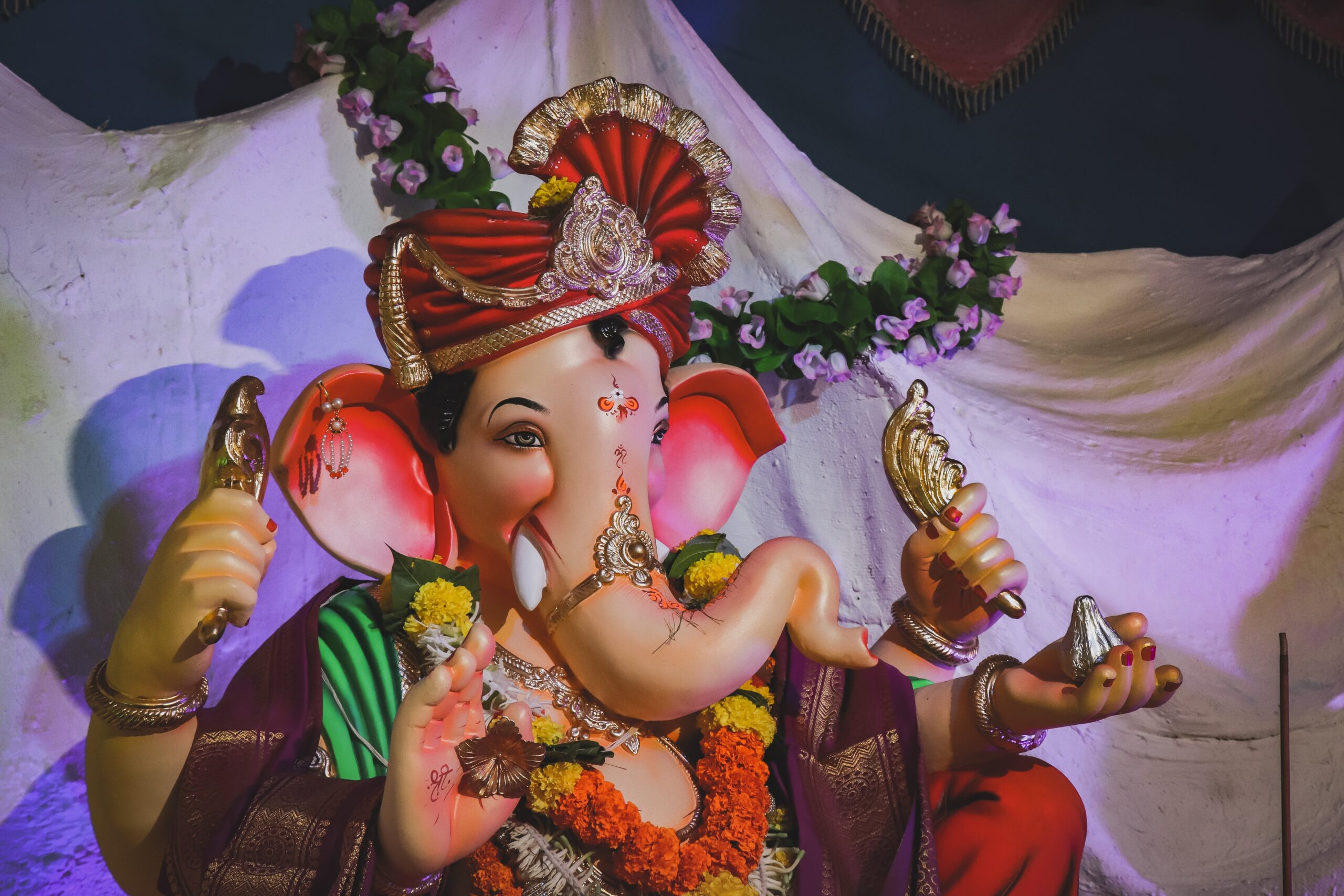Step into the enchanting world of Indian literature as we uncover the true literary significance of the Ramcharitmanas. Embark on a journey through time and culture, as we delve into the linguistic and literary treasures of India. From the timeless influence of Sanskrit and classical epics, to the vibrant voices of contemporary authors, India’s rich literary heritage comes to life in the pages of this iconic masterpiece. Prepare to be captivated by the depth and beauty of the Ramcharitmanas, a true gem in the literary landscape of India.

Background
Introduction to the Ramcharitmanas
The Ramcharitmanas, also known as the Tulsi Ramayana, is an epic poem written by the revered saint-poet Goswami Tulsidas. It is one of the most beloved and widely read religious texts in India and holds immense cultural and spiritual significance. Composed in the 16th century, it retells the story of Lord Rama, his divine incarnation, and his heroic exploits during his exile and subsequent battle against the demon king Ravana.
Authorship and Composition
Goswami Tulsidas, born in 1532, was a fervent devotee of Lord Rama and an accomplished scholar. Inspired by a deep sense of devotion, he embarked on the monumental task of composing the Ramcharitmanas. This masterpiece was written in Awadhi, a dialect of Hindi, making it accessible to the common people who may not have been well-versed in Sanskrit, the language of the ancient religious texts. Tulsidas beautifully weaved together the narrative of the Ramayana, infusing it with his own spiritual insights and poetic brilliance.
Historical Context
The composition of the Ramcharitmanas took place during a time of great social and political turmoil in India. The 16th century witnessed the decline of the Mughal Empire and the rise of regional powers. Tulsidas, through his epic poem, provided solace and guidance to the masses, offering a moral compass and instilling faith in the principles of righteousness. The Ramcharitmanas emerged as a beacon of hope during a period when societal norms were being challenged, and spiritual values were under threat.
Themes
Devotion and Piety
At the core of the Ramcharitmanas lies the theme of unwavering devotion to Lord Rama. Tulsidas, through the characters of Lord Rama, Sita, Hanuman, and others, showcases the boundless love and reverence one should have for the divine. The chant of “Jai Shri Ram” resonates throughout the narrative, emphasizing the power of devotion as a means of attaining spiritual liberation.
Dharma (Righteousness)
Dharma, the concept of righteous duty, is another predominant theme in the Ramcharitmanas. Tulsidas emphasizes the importance of adhering to one’s moral obligations, irrespective of the challenges faced. Lord Rama, the epitome of righteousness, adheres steadfastly to his duties as a son, husband, and king, setting an example for all individuals to follow in their own lives.
Love and Relationships
The Ramcharitmanas highlights the deep bonds of love and relationships. The love between Lord Rama and Sita, portrayed as the ideal couple, serves as a symbol of eternal love and devotion. The selfless love between brothers, Lord Rama and Lakshmana, and the unconditional devotion of Lord Hanuman towards Lord Rama, showcase the importance of love and loyalty in relationships.
Social Justice and Equality
Tulsidas, through the narrative of the Ramcharitmanas, addresses societal issues and advocates for social justice and equality. He challenges societal norms and biases, emphasizing the equal worth and respect for all individuals. The characters of Lord Rama treating all individuals with fairness and kindness, irrespective of their social standing, serve as an inspiration for a just and egalitarian society.

Narrative Structure
Overview of the Storyline
The Ramcharitmanas follows the chronological events of the original epic Ramayana. It begins with the birth of Lord Rama, his princely upbringing, marriage to Sita, and subsequent exile to the forest. The poem then delves into the challenges faced by Lord Rama and his loyal companions during their exile, including the abduction of Sita by Ravana. It culminates in the epic battle between Lord Rama and Ravana and the eventual victory of good over evil.
Use of Language and Versification
Tulsidas masterfully employs the Awadhi dialect of Hindi in the composition of the Ramcharitmanas. This choice of language makes the text accessible to people from diverse linguistic backgrounds. The use of simple yet lyrical verses, coupled with vivid imagery, adds to the poetic beauty of the text. Tulsidas’ skillful craftsmanship in employing various poetic devices enhances the emotional impact of the epic.
Symbolism and Allegory
The Ramcharitmanas is replete with symbolism and allegory. Tulsidas employs metaphors and symbolism to convey deeper spiritual insights and philosophical concepts. For example, the journey of Lord Rama from Ayodhya to Lanka symbolizes the journey of the soul from ignorance to enlightenment. The characters often represent different aspects of human nature, allowing readers to reflect upon their own qualities and actions.
Religious Significance
Connection to Hinduism
The Ramcharitmanas holds immense religious significance in Hinduism. It beautifully encapsulates the devotion, moral values, and ethical principles that form the cornerstone of the religion. It serves as a source of spiritual guidance and inspiration for millions of Hindus around the world, fostering a deep connection with the divine and reinforcing the principles of righteousness and devotion.
Devotion to Lord Rama
The Ramcharitmanas encourages and nurtures devotion to Lord Rama. The portrayal of Lord Rama’s divine attributes and his unwavering commitment to righteousness provides a role model for devotees. It serves as a reminder of the power of faith and inspires individuals to emulate Lord Rama’s qualities in their own lives.
Influence on Bhakti Movement
The Ramcharitmanas played a pivotal role in the Bhakti Movement, which swept across India during the medieval period. The Bhakti Movement emphasized the personal and emotional aspect of devotion towards the divine. Tulsidas’ Ramcharitmanas, with its emotional depth and emphasis on devotion, became a cornerstone of the Bhakti Movement, inspiring countless individuals to connect with God through love and devotion.

Literary Techniques
Characterization
One of the notable literary techniques employed in the Ramcharitmanas is masterful characterization. Tulsidas breathes life into the characters, making them relatable and endearing to the readers. Each character is meticulously crafted, showcasing their unique personalities, virtues, and flaws. This allows readers to empathize with the characters and deeply engage with their stories.
Dialogue and Monologue
Dialogue and monologue are extensively used in the Ramcharitmanas to convey the thoughts, emotions, and intentions of the characters. Through their conversations and internal reflections, Tulsidas provides insights into their motivations and dilemmas. The dialogues and monologues add depth and authenticity to the narrative, enabling readers to connect with the characters on a profound level.
Use of Epithets
Epithets are frequently employed by Tulsidas to describe characters and objects in the Ramcharitmanas. These descriptive phrases, often highlighting the divine qualities of the characters, not only enhance their characterization but also contribute to the poetic beauty of the text. Epithets such as “Maryada Purushottam” for Lord Rama and “Janaki Jananayak” for Sita become synonymous with their respective characters.
Repetition and Chants
Repetition is a notable feature in the Ramcharitmanas, adding rhythm, emphasis, and spiritual significance. Various hymns and chants are reiterated throughout the text, reinforcing the core themes and principles of the epic. The repetition of these mantras and chants serves as a form of meditation, allowing readers to immerse themselves in the divine consciousness and experience a spiritual connection.
Cultural Impact
Popularity and Readership
The Ramcharitmanas has enjoyed immense popularity and continues to be widely read across India and beyond. Its popularity can be attributed to its simplicity, accessibility, and profound spiritual teachings. Tulsidas’ skill in narrating the story of Lord Rama in a captivating manner has made it a beloved text for people of all ages and backgrounds.
Influence on Indian Literature
The Ramcharitmanas has had a profound influence on Indian literature. It inspired subsequent generations of poets and writers to create their own adaptations and interpretations of the Ramayana. The moral and spiritual lessons embedded within the Ramcharitmanas have permeated Indian literature, shaping the values and ethics portrayed in various literary works.
Adaptations in Art and Performance
The Ramcharitmanas has been the inspiration for numerous artistic and performative adaptations. It has been beautifully depicted in miniature paintings, sculptures, and murals, preserving the essence of its characters and narrative. The epic has also been performed in various theatrical forms, such as Ramlila, where its episodes are enacted on stage, fostering a deep sense of devotion and cultural identity.
Comparison with Other Versions
Ramayana by Valmiki
The Ramcharitmanas is often compared to the original Ramayana, authored by Valmiki. While Valmiki’s Ramayana focuses more on the narrative and historical aspects, the Ramcharitmanas delves deeper into the spiritual and emotional dimensions. Tulsidas’ retelling brings forth the devotional aspects of the story, highlighting the inseparable bond between the characters and the divine.
Ramacharitam by Tulsidas
Apart from the Ramcharitmanas, Tulsidas also composed another version of the Ramayana known as the Ramacharitam. While both texts portray the life and exploits of Lord Rama, the Ramcharitmanas is more widely read and revered. It is deemed as the magnum opus of Tulsidas, encapsulating his spiritual insights and devotional fervor.
Other Regional Variations
The Ramayana is a story deeply ingrained in the cultural fabric of India, and as such, various regional variations of the epic exist. These versions, influenced by local customs, languages, and traditions, offer different perspectives and interpretations of the story. The Ramcharitmanas, with its Awadhi language and North Indian cultural influences, stands as one of the most prominent regional variations.
Translations and Interpretations
English Translations
The Ramcharitmanas has been translated into English by various scholars and poets, making its spiritual teachings and cultural significance accessible to a wider audience. These translations endeavor to capture the essence of Tulsidas’ poetic brilliance and convey the deep spiritual insights embedded in the epic.
Scholarly Interpretations
Scholars and theologians have embarked on comprehensive studies of the Ramcharitmanas, seeking to unravel its layered spiritual and philosophical dimensions. These scholarly interpretations explore the socio-cultural implications of the epic, shedding light on the intricacies of Tulsidas’ poetic genius and the timeless lessons it imparts.
Translations in Other Languages
Apart from English, the Ramcharitmanas has been translated into several other languages, bridging the linguistic gap and allowing people from diverse cultural backgrounds to delve into the spiritual treasure that it embodies. These translations enable a wider audience to experience the profound teachings and moral values present in the epic.
Contemporary Relevance
Relevance in Modern Indian Society
The Ramcharitmanas continues to hold significant relevance in modern Indian society. Its teachings of devotion, righteousness, love, and egalitarianism provide individuals with a moral compass to navigate through the complexities of life. The epic serves as a source of inspiration and guidance, offering solace and hope in times of turmoil and uncertainty.
Ethical and Moral Values
The ethical and moral values espoused by the Ramcharitmanas remain timeless and offer valuable insights into human behavior. The emphasis on truth, compassion, and righteousness serves as a reminder of the importance of these virtues in fostering a harmonious and just society. The epic encourages individuals to reflect upon their own actions and strive for personal growth and moral excellence.
Political and Social Commentary
The Ramcharitmanas also contains elements of political and social commentary. Tulsidas, through the narrative, subtly addresses issues such as good governance, accountability, and social equality. The epic serves as a mirror, enabling individuals to introspect and actively engage in addressing the societal challenges of their time.
Criticism and Debates
Allegations of Bias and Propaganda
Critics have accused the Ramcharitmanas of propagating bias, particularly in its portrayal of certain characters such as Ravana and Sita. These allegations stem from differing interpretations and ideological perspectives. However, proponents of the epic argue that these criticisms fail to acknowledge the nuanced and complex nature of the characters and the lessons they impart.
Gender Representation
The portrayal of female characters, especially Sita, has been a subject of debate and criticism. Some argue that Sita’s depiction as a devoted and obedient wife reinforces gender stereotypes. However, others contend that Sita’s character embodies strength, resilience, and unwavering faith, highlighting her as a symbol of feminine power and wisdom.
Historical Accuracy
As with any narrative rooted in ancient history and mythology, there are debates surrounding the historical accuracy of the Ramcharitmanas. Critics question the factual accuracy of certain events and characters, viewing them as allegorical rather than historical. Yet, proponents argue that the Ramcharitmanas transcends historical accuracy, presenting profound spiritual truths that resonate with readers across centuries.
In conclusion, the Ramcharitmanas stands as a literary and spiritual masterpiece that has left an indelible mark on Indian society and culture. Through its profound teachings, captivating narrative, and timeless themes, it continues to inspire and guide individuals in their pursuit of righteousness, devotion, and moral values. Tulsidas, with his poetic brilliance, has created a work that not only captures the essence of the Ramayana but also serves as a source of solace and spiritual nourishment for millions. The Ramcharitmanas remains a beacon of love, faith, and devotion, illuminating the path towards enlightenment and eternal bliss.
